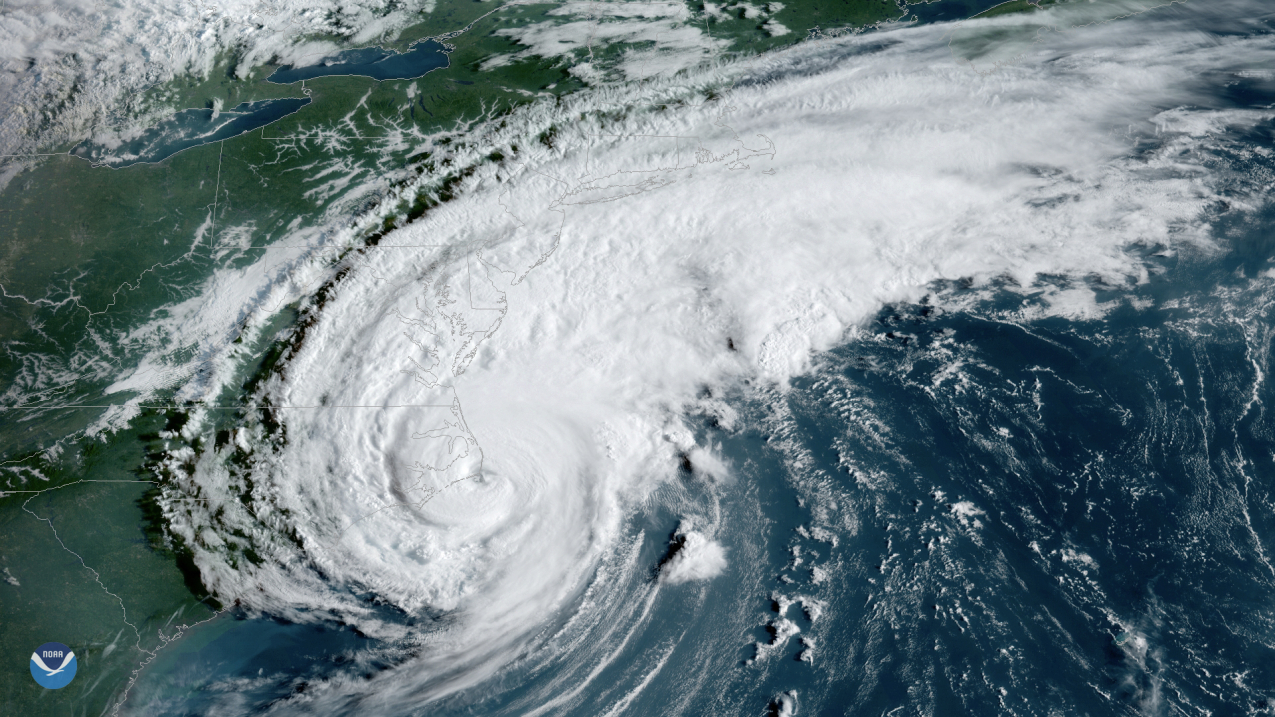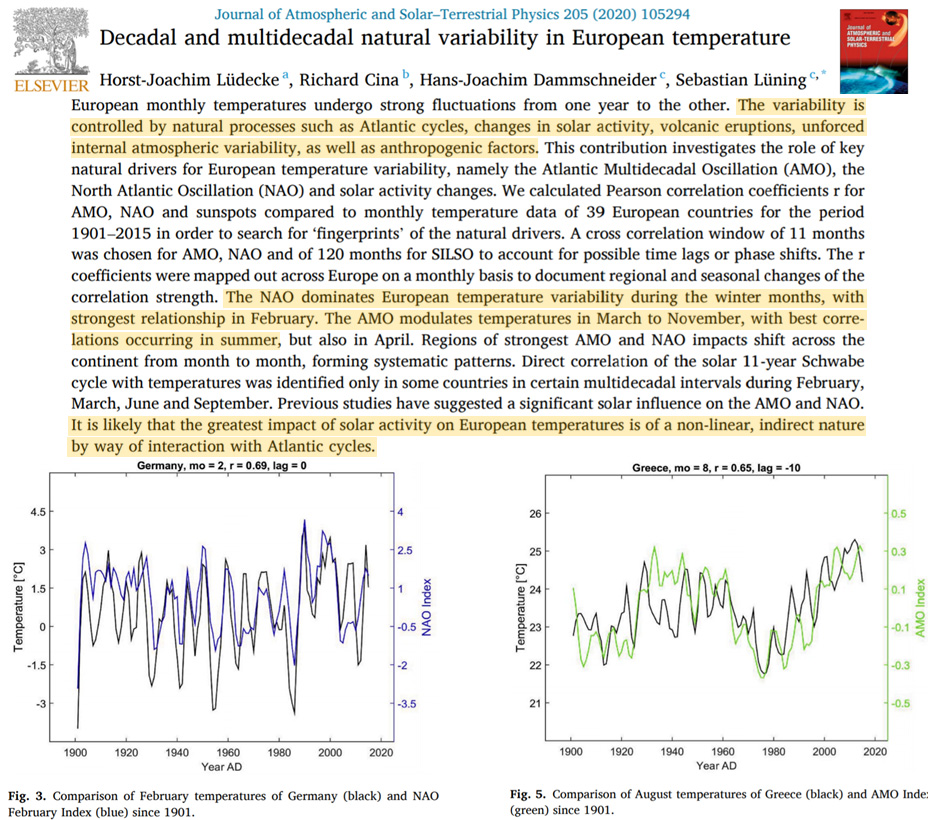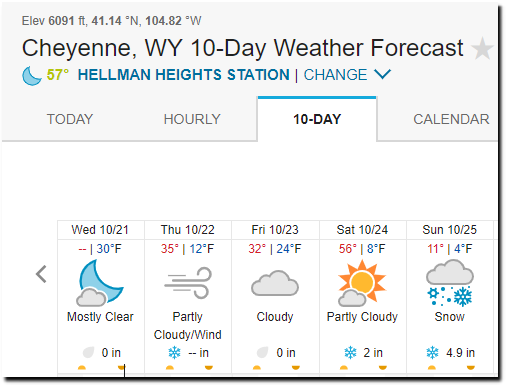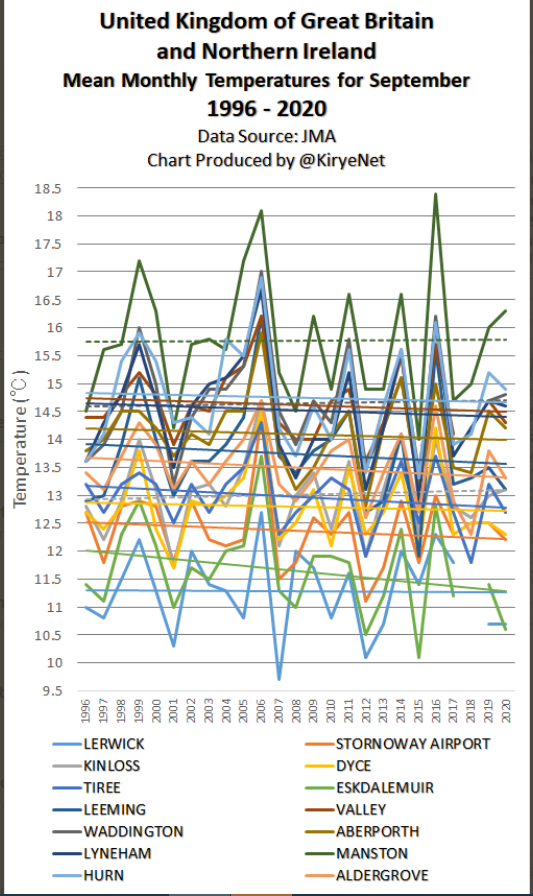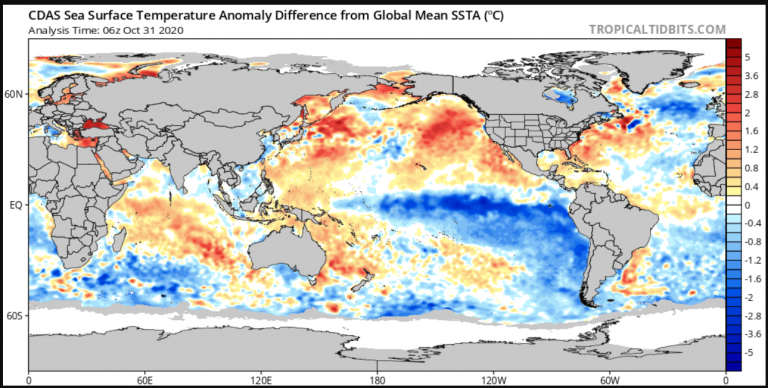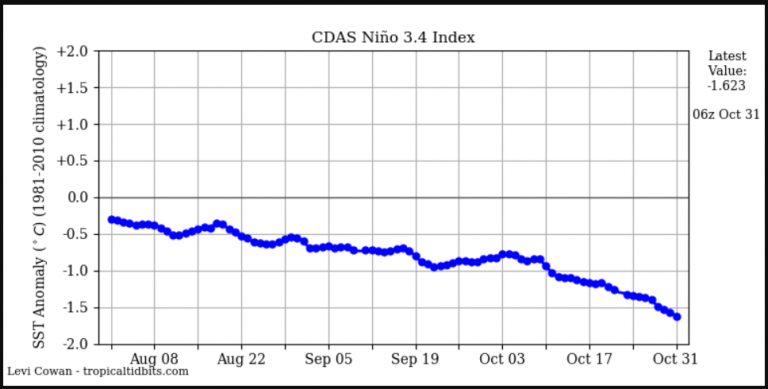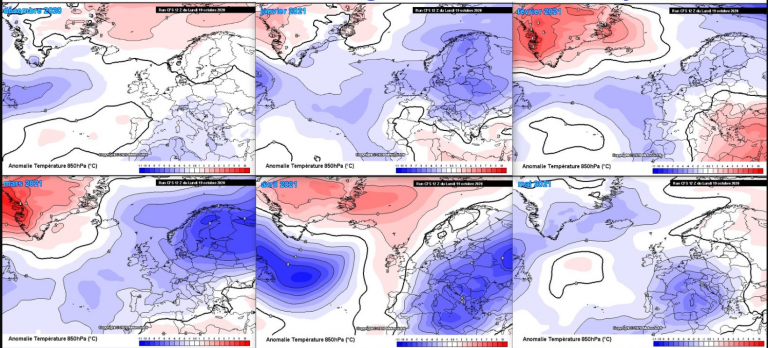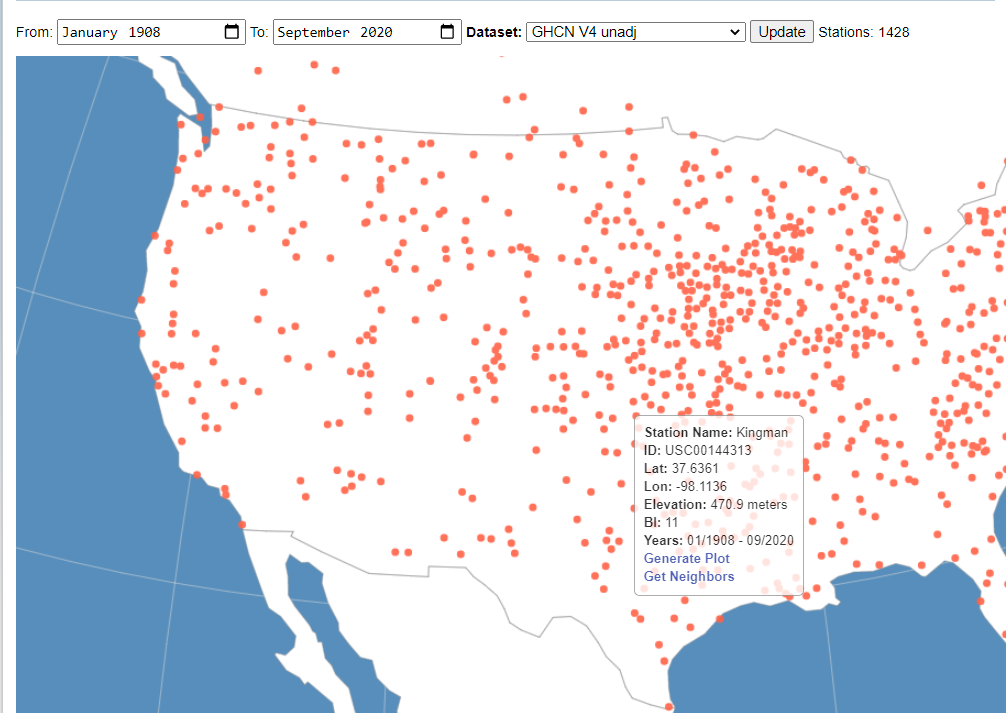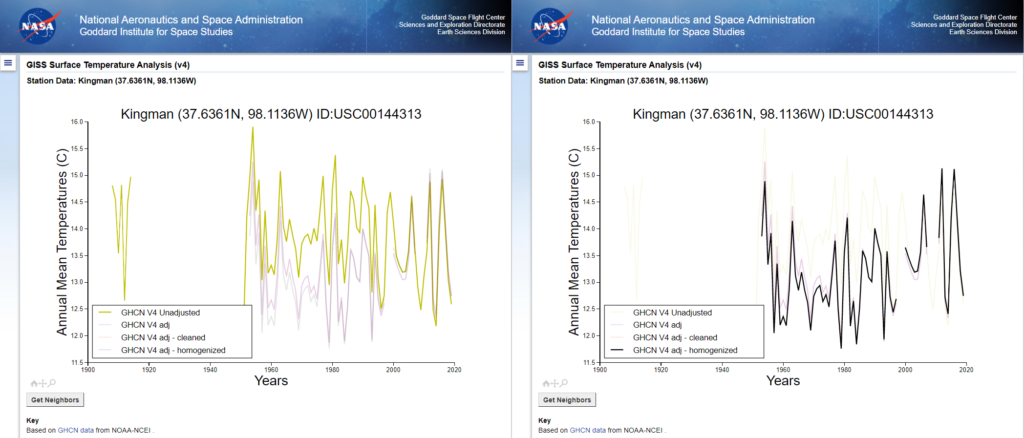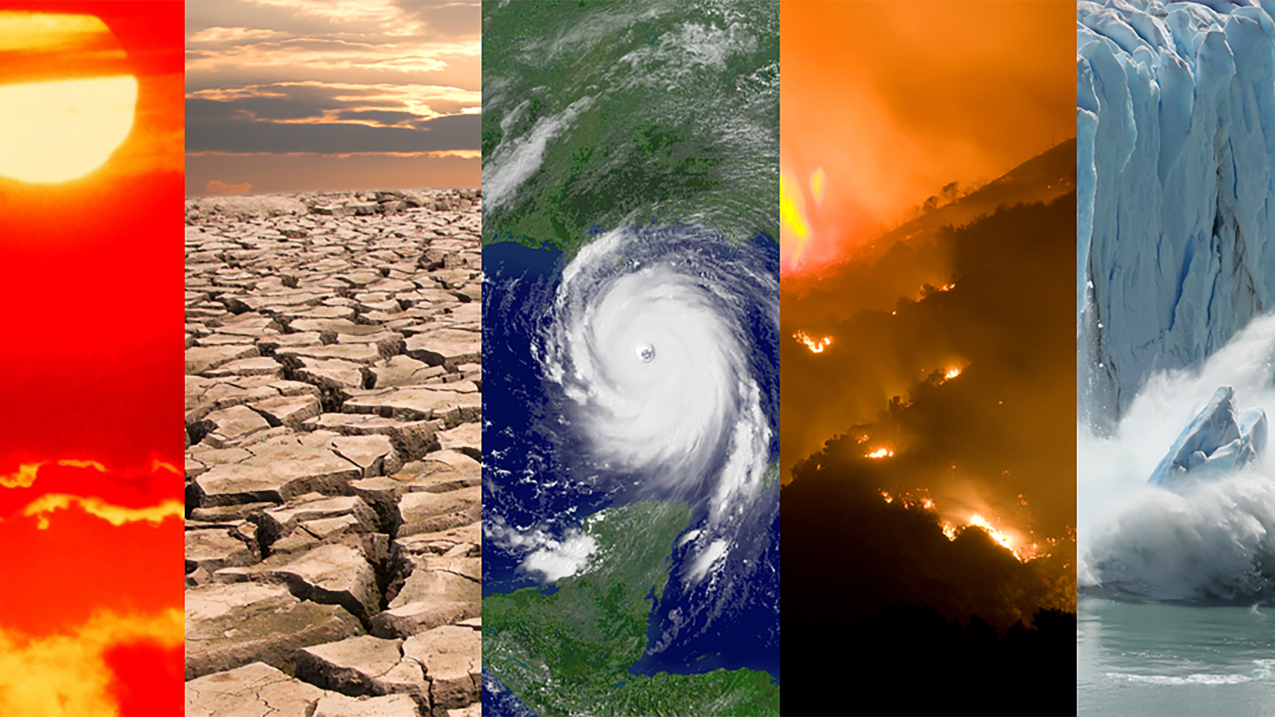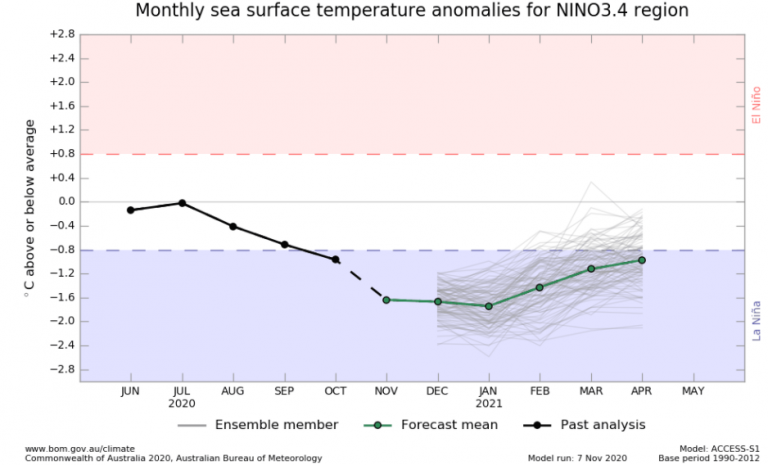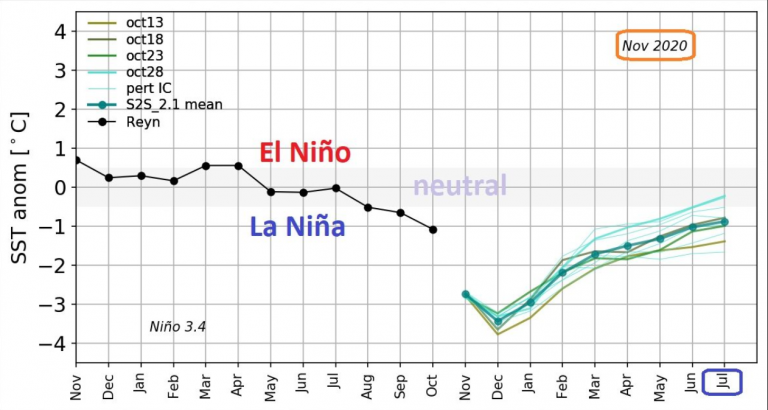- Joined
- Jan 28, 2013
- Messages
- 94,823
- Reaction score
- 28,342
- Location
- Williamsburg, Virginia
- Gender
- Male
- Political Leaning
- Independent
How The US Temperature Record Is Being Altered (Part 2)
Posted on October 20, 2020 by tonyheller
NOAA and NASA US temperature graphs have been massively altered over the past 20 years, to turn a 90 year cooling trend into a warming trend.
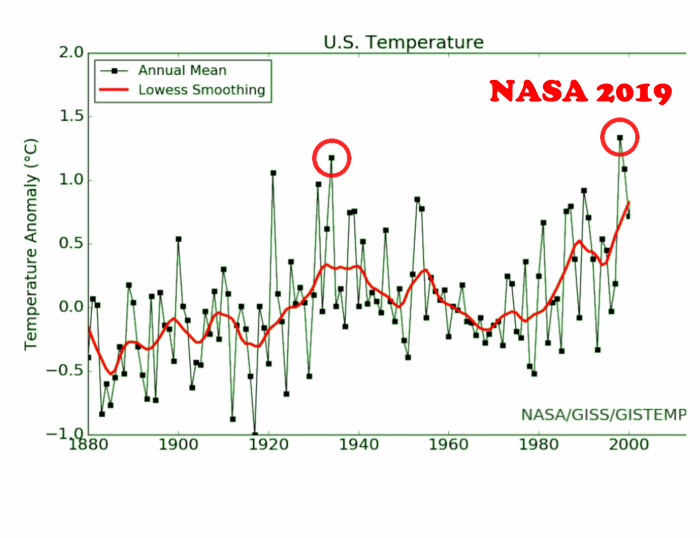
NASA 1999 NASA 2019
The adjustments are being made by cooling the past nearly 1.5F and warming the present more than 0.5F. . . . .
Posted on October 20, 2020 by tonyheller
NOAA and NASA US temperature graphs have been massively altered over the past 20 years, to turn a 90 year cooling trend into a warming trend.

NASA 1999 NASA 2019
The adjustments are being made by cooling the past nearly 1.5F and warming the present more than 0.5F. . . . .

